Home »
Misc »
How to impress coaches at basketball tryouts
How to impress coaches at basketball tryouts
8 Tryout Tips Guaranteed to Get You Noticed (And What To Avoid So You Don't Get Cut)
Do you know exactly what the coach is looking for in tryouts? Do you know everything you need to do?
You may think that you do, but its highly unlikely.
Actually, what you think would help with tryouts may be the exact reason you get cut from the team. Sad thing is that Ive seen players like you make these critical mistakes over and over and over again.
Ive been fortunate to conduct tryouts for youth clubs with over 400 kids. Ive also been part of high school varsity tryouts with 100 kids for a state championship caliber team at the high school level.
Im able to give you the critical tips that can help you make the team and avoid those mistakes that get you cut.
Like this article? Download it as a free PDF! (Download Now!)
1. Do what you do well.
One of the biggest mistakes you can make is trying to impress the coach by doing things that are outside your skill set.![]() This often results in a disaster for you.
This often results in a disaster for you.
If you are a good rebounder, grab every rebound.
If you are a good shooter, shoot when you are open.
If you are a good finisher, attack the basket when a lane is open.
If you are a good ball handler, make the simple passes, the simple moves.
If you are not a good 3-point shooter, dont step out and shoot one during tryouts. Ive seen kids literally hit the side of the backboard trying to do this.
The coach will instantly think, Wow. This kid does not know a thing about shot selection. Maybe hes a low IQ kid.
Trust me... with the limited time that a coach can see you... this is not the impression you want to make. Even if you play great the rest of the time, the coach already has impression about you and thats hard to change.
Here is a good measure... can you make 7 out of 10 shots unguarded from a spot.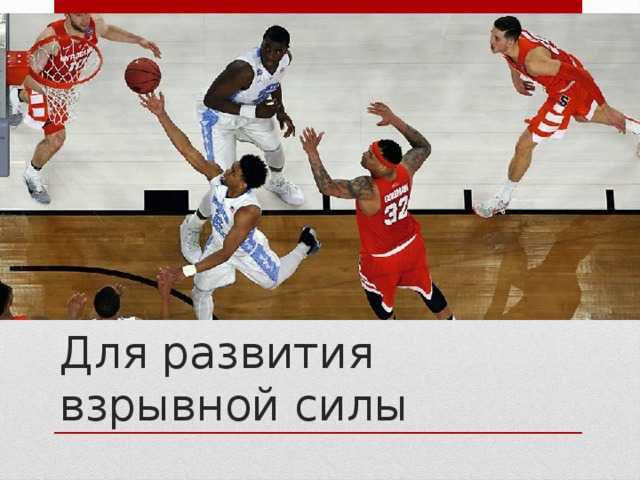 Maybe 6 out of 10 for youth players. If not, dont take the shot at tryouts.
Maybe 6 out of 10 for youth players. If not, dont take the shot at tryouts.
2. Hustle! Hustle! Hustle!
There is no excuse for any player on this one. You just have to commit and develop that mentality.
When the ball is on the floor, dive on the floor. Box out on every shot. Sprint on the fast break. Sprint to spots on the floor on defense.
Communicate on defense and offense. Be loud and do it often.
These are things that every player can do and every player should do.
This is why you see players who arent skilled make the team. Theyre willing to do the little things that make teams good or great.
3. Dont be just one of the guys in the crowd - Make a great first impression.
Here is a great way to make a first impression.
When the coach calls everybody in at the beginning of the first tryout...
Instead of walking out there or jogging out there like every other kid.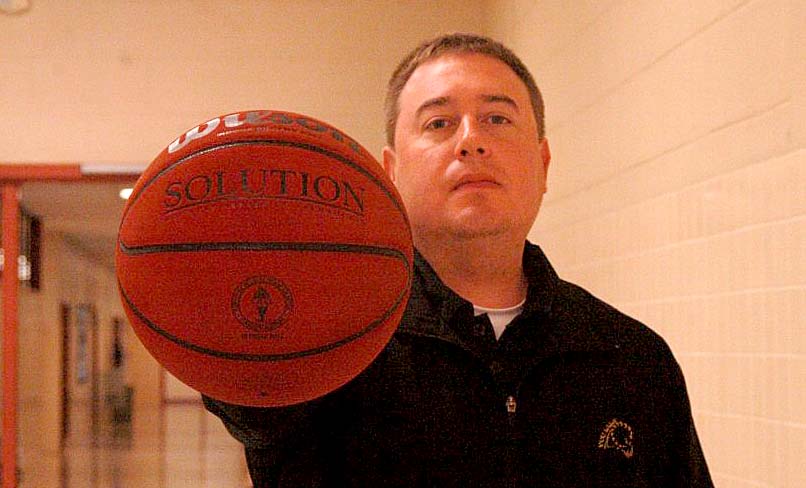
Sprint! Sprint directly to the coach and stand right in front of him. Stand tall and keep eye contact on the coach during the entire talk.
I guarantee youll have the coachs attention. Ive conducted tryouts. Ive been in rooms with coaches discussing who to cut. This makes a difference.
Your buddies may give you some crap, but youll be the one laughing when you make the team or get more playing time than them.
4. Avoid the amazing play mentality. Do something that makes you stand out in a positive way.
This is not what you think. This is not making an amazing play. Remember... do what you do well.
Flashy doesnt impress coaches. It may look cool on the playground, but thats why you dont see NBA guys doing streetball moves during games. Its flash. Its hype. Its not effective against good players.
You should do something with substance that coaches will notice in a positive way.
Earlier, I mentioned communicate on defense.
One time when I was conducting a tryout for 3rd to 8th graders, we were with the 4th grader session.
All of the sudden, across the gym, I hear a blaring yell Screen! Screen! Screen! It was from this little guy named Tommy.
Ten seconds later, I hear Tommy yell again, I got ball!
This continued the whole day. He communicated early. He communicated loud. He communicated often. (ELO Early Loud Often. Kevin Eastman would have been proud.)
There may have been 30 other kids communicating in the gym, but he is the only one I remembered. I didnt know him before the tryouts, but I sure know him now. Guess what... he made the first team.
5. Dont be shy Talk to the coaches before tryouts.
Too many make the big mistake of being too shy to talk to the coach. And this can make a huge difference with making the team.
Sometimes, this simple act will elevate you in the eyes of the coaches because they know that you care and youll do whatever it takes to help the team.
Be specific. Tell the coach that you really want to make the team. Ask them what they need on their team.
6. Be a great teammate Great attitude and sportsmanship
Every coach wants a player who is a great teammate and makes the players better around them.
You can do this by...
Being a great practice player and challenging your teammates during practice to make the team better.
By putting everybody in a better mood with your positive attitude. Lets face it... were all humans and its more enjoyable to have a little fun in life. Nobody wants to be around a person with a poor attitude.
Display great sportsmanship. When a coach sees you helping players off the floor and playing hard but clean basketball, they know that they can count on you not to lose your cool and hurt your team in a negative way at an important time.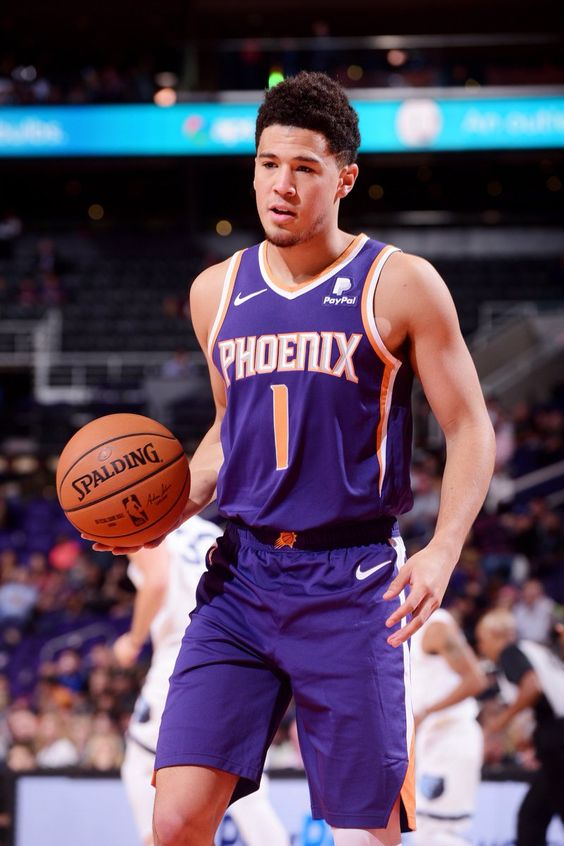
7. Get there early / warm up properly.
Getting there early shows the coach that you care and that he can depend on you to show up on time to practices and games.
Also, make sure to warm up prior to playing, so you are playing your best as soon as the whistle blows. First impressions are very important.
8. Who cares if you screw up Next play!
If you make a mistake... oh well, it happens. Everybody makes mistakes.
Always go on to the next play.
The best players react in a positive way to those mistakes and dont let them snowball into a bunch of mistakes.
There are no guarantees in life. However, if you use the tips mentioned above, you will dramatically increase your chances to make the team and earning more playing time.
If you are serious about becoming a better player, we offer Basketball Camps throughout the country during the spring, summer, and fall.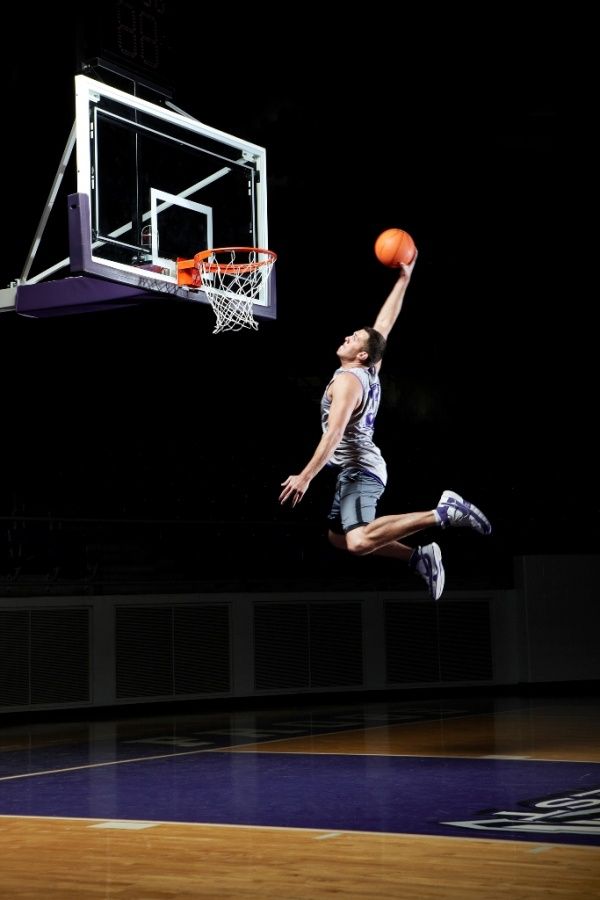
To check out the different camps, Click Here.
Recommended DVDs & eBook:
|
|
The Attack & Counter Skill Development System
This eBook & DVDs will improve your shooting, ballhandling, footwork, perimeter moves, post moves, finishing, aggressiveness, quickness, confidence, mentality, and your all-around game!
Designed by NBA skills coach Don Kelbick, this unique and comprehensive system is incredibly simple when compared to other skill development programs. Yet it works with NBA and pro players at the highest level... (more info)
|
What do you think? Let us know by leaving your comments, suggestions, and questions...
11 Tips for Basketball Tryouts (How to Stand Out and Get Selected)
The first day of basketball tryouts can be a nerve-wracking experience for players.
No matter how long you've been playing or how many tryouts you've attended, everyone gets those little butterflies in their stomach before walking into the gym.
Today, I'll try to calm your nerves a bit...
Below I've listed several things you can do to prepare for basketball tryouts.
Whether you’re a freshman trying to make your high school team, a youth player attempting to earn a spot on a travel team, or an athlete hoping to make an impression on an AAU coach...
The 11 tryout tips below can help you.
11 Basketball Tryouts Tips:1. Arrive in Fantastic ShapePossibly the single best thing you can do to improve your odds of getting selected is making sure your body is in good condition BEFORE tryouts begin.
Basketball tryouts always involve A LOT of running or transition play.
Some coaches even seek to find out which players can fight through fatigue.
You want to be able to focus on playing your best, not simply surviving the tryout.
If you arrive in peak shape, you'll have a big advantage over many of your peers.
2. Trust Your PreparationIt’s easy to feel nervous due to the stress of the tryout.
Try to fight off these nerves by trusting yourself and the work you have already done!
Preparation equals confidence.
Think about it…
If you have spent countless hours developing your shot, improving your ball handling, studying the game, and practicing against good competition, why wouldn’t you feel confident?
You deserve to make the team!
All you have to do is go out and prove it.
3. Arrive Early and Get to WorkIn many areas of life, it’s possible to make a good impression by simply showing up early.
(this is one of the many life lessons basketball will teach)
If your tryout is right after school, get ready quickly and get out to the court.
If your tryout is in the evening, ask your parents to can get you there well ahead of the start time.
While this probably won’t be the make or break factor on who makes the team, it gives you a chance to show the coaches you’re serious about making the team.
If you don’t already know the coach, make a point to introduce yourself to him or her.
When you take the court, begin working on your game immediately.
Coaches don’t want to see players messing around and shooting half court shots before practice.
Begin with form shooting or completing a ball-handling routine.
4. Your Body Language Is ImportantThis is an aspect of the game that players often overlook.
Coaches place a huge premium on body language.
Understand that you're communicating your attitude not only with your words, but also with your eyes, reactions, and facial expressions.
Be sure to make eye contact and nod your head to show understanding.
Don’t pout or stop playing if you miss a shot or think you get fouled.
Your coaches WILL constantly be assessing these things.
If they think you're inattentive or easily rattled / frustrated, it will hurt your chances.
5. Be the Loudest Player in the GymCommunication is huge!
There are several ways to help your team, as well as your own chances of making the final roster, by focusing on communicating well.
First, the defensive end of the floor is a great place to constantly talk.
Does your coach give you specific verbals to use?
Maybe he or she wants you to communicate “BALL,” “GAP,” “DENY” or some other defensive phrases.
If your coach doesn’t specify, simply call out what you are doing throughout each defensive possession:
- “I got your help!”
- “I’ve got the ball!”
- “Force him left!”
A talking defender is usually an engaged defender.
Just as important, you can elevate the environment of the practice by offering reminders and encouragement to your teammates.
Basketball tryouts do pit players against one another as everyone is fighting to make the team...
But coaches want to keep players who are great teammates!
A player who is constantly encouraging those around her will have an advantage over someone who keeps to herself.
Make sure your coaches and teammates hear you!
Finally, you may be asked to learn some new plays, drills, or concepts during the tryout period.
If you don’t understand something, be sure to ask a coach.
This is important for two reasons:
(1) Asking a question to gain clarification is certainly better than messing up the drill.
(2) Asking questions show that you are engaged and that you want to learn more.
6. Get “Teammate Touches”This is another form of communication.
Show support for your teammates by high-fiving and fist bumping as much as possible.
This is a simple way to show leadership and to enhance the practice environment.
Get touches when running to the end of a line or after a teammate makes a good play.
Challenge yourself to get one touch and to make two comments of encouragement each minute of your basketball tryouts (when a coach isn’t talking, of course).
7. Focus on the “Little Things”Boston Celtics head coach Brad Stevens once said:
“When considering the consequences of not doing the little things, you realize there are no little things.”
Coaches understand this, and smart players do as well.
Coaches want players on their team they can trust to do everything possible to help the team win.
Of course you can help yourself in tryouts by knocking down shots…
But everyone has the occasional poor shooting day.
So make sure you aren’t relying on having a good shooting day by finding other ways to make a great impression on the coaches.
- Take a charge
- Communicate loud
- Dive on a loose ball
- Listen with your eyes
- Battle hard for rebounds
8. Play to Your Strengths
Play to Your StrengthsThis tip is crucial.
As a player, you must realize what you do AND do not do well.
All players will have strengths and weaknesses.
You’ll make the best impression on the coaches by focusing on what you do well.
For example:
If you’re not a great shooter, it doesn’t make sense to throw up a wild shot every time you touch the ball in hopes of draining a three-pointer.
That’s likely not the best way to show the coaching staff how you will help their team.
On the other hand…
If you excel at rebounding, challenge yourself to be the BEST rebounder in the gym.
(Who would possibly cut the best rebounder on the team?)
Or maybe you’re a quick and savvy defensive player...
Make an effort to pressure your opponent full court and disrupt your man every time he or she has the ball.
By the end of basketball tryouts, make sure the coaches know exactly what you do well.
You’ll have time to improve your areas of weakness throughout the season.
9. Sprint the Floor on Every PossessionTransition is a tremendously important part of the game.
Players who sprint in offensive transition can accumulate easy baskets. And players who run hard in defensive transition can wipe out easy opportunities for the opponent.
Both are crucial to winning games, and both can make an impression on your coaches.
Doing this well comes down to a few factors.
The first goes back to tip number one…
Be in shape!
Next, try to develop a mindset of running hard.
You don’t have to be the quickest player in the gym to run hard.
Players who can read the play and take off immediately in transition have a huge advantage over those who “ball watch”.
Coaches often talk about the importance of the first three steps in the transition game.
When your team gets a defensive rebound, take off!
If your opponent rebounds the ball, sprint back and be ready to make a play!
Your coaches will notice.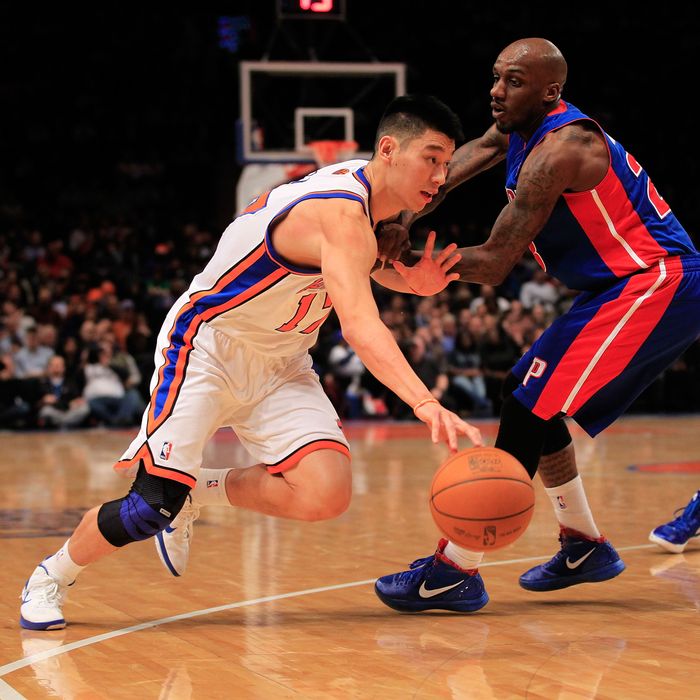
10. Details, Details, DetailsBasketball coaches are inherently detail-oriented.
If a play calls for a player in the corner, they want him all the way in the corner.
If a screen is supposed to be set on the elbow, that’s where it needs to be.
Be sure to listen and do your best to execute the nuances of the game.
You can also show your attention to detail in how you execute the fundamentals.
For example:
Many coaches include a brief form shooting segment in their practice plans.
Don’t simply flip up the ball...
Get your feet set, snap your wrist, and hold your follow through!
Executing these details show that you are focused and trying to do your best.
11. Compete Your Butt OffYour team’s basketball tryout is a competition.
While it’s not productive to get caught up in comparing yourself to other potential players, you do need to be ready to compete hard.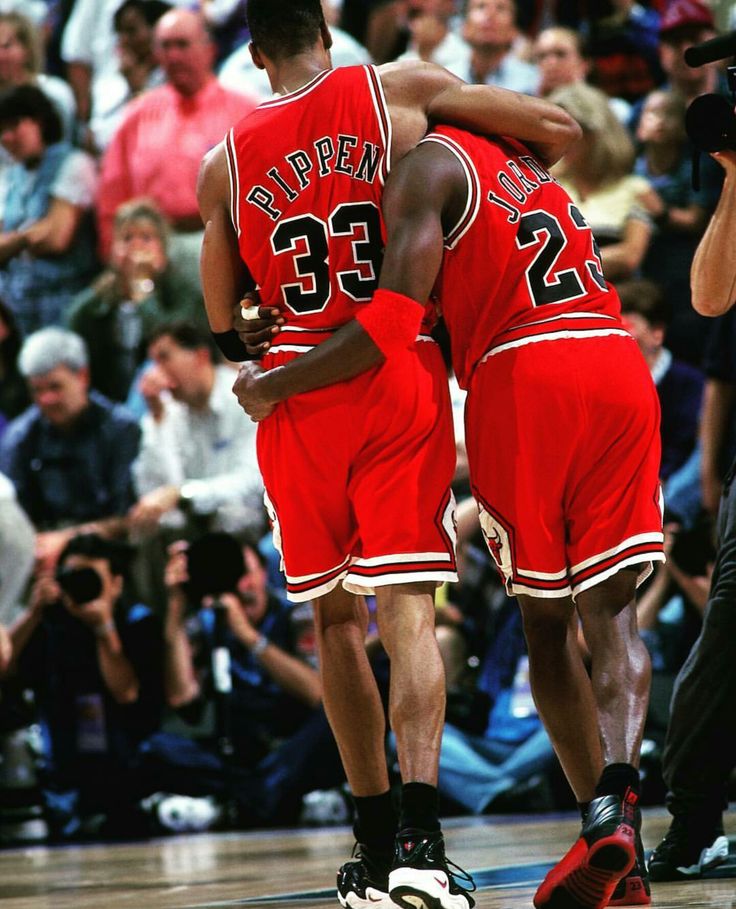
The best way to compete is by simply doing YOUR best in every part of the tryout.
That’s all anyone can expect you to do!
If you play as hard as you can in every drill and scrimmage, you will put yourself in great position to not only make the team, but to excel and have a great season.
Conclusion:Coaches understand that the basketball tryouts process can be stressful for players.
Trust me, it can be stressful for us as well!
Coaches want to see players excel and show how they can help the team.
So relax!
Prepare yourself to the best of your ability, be confident, be a great teammate, focus, and do your best. If you do those things, you are bound to have a successful tryout.
Good luck!
The role of a coach in shaping the personality of young basketball players
Basketball is the most interesting ball game, it is a means of physical development and education of young people.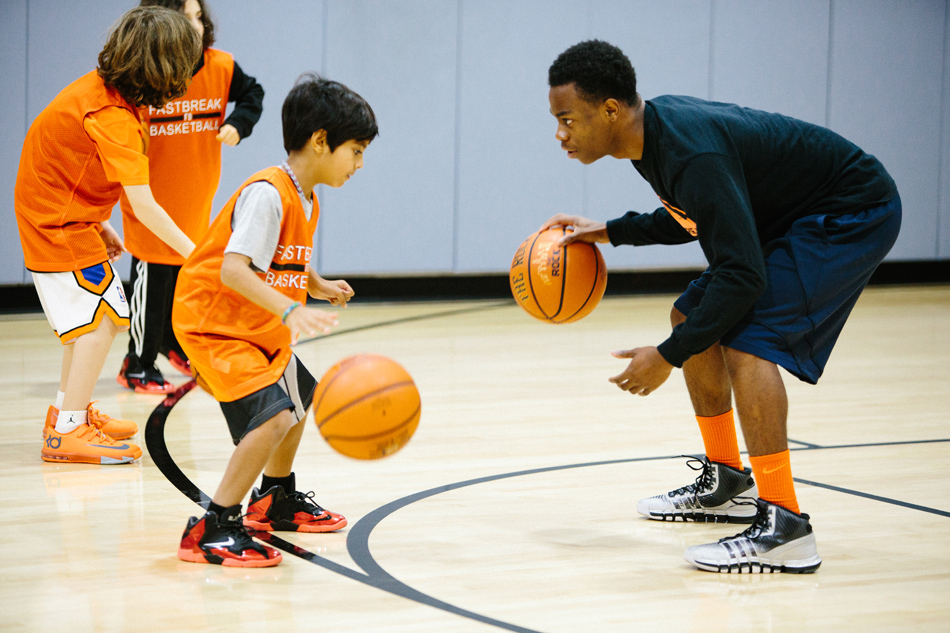 [3].
[3].
An American physical education teacher, professor at Springfield College, in 1891 came up with a game that could be played indoors in a relatively small space. This game was called "basketball" [6].
Basketball helps to develop perseverance, courage, determination, honesty, self-confidence, a sense of teamwork, responsibility to the team.
Basketball consists of natural movements (walking, running, jumping) and specific motor actions without the ball (stops, turns, side steps, feints, etc.), as well as with the ball (catching, passing, dribbling, throwing). Confrontation, the goals of which are to take the opponent's basket and protect one's own, causes the manifestation of all physical qualities vital for a person: speed, speed-strength and coordination abilities, flexibility and endurance. Achieving a sports result requires the players to have a sense of purpose, perseverance, determination, courage, self-confidence, a sense of collectivism [5].
Such a comprehensive and complex impact on those involved gives the right to consider basketball not only an exciting sport, but also one of the most effective means of physical and moral education in different age periods [7].
Therefore, basketball is included in the program of education and training of children, starting from kindergartens, schools and ending with universities.
Rights and obligations of players
Schoolchildren are the same people with their own character, developmental features, opportunities and rights, psychology. The coach must always remember this and respect them. Children's sports schools determine the following rights of young athletes: to participate in sports competitions of various levels and qualifications, the level of which corresponds to their abilities and age. A player must train for a certain number of days and participate in a certain number of games, and this must be done even when you don’t feel like it at all. Responsibilities mean that in some cases the player must sacrifice his personal desires, think about others, and not just about himself, and maintain discipline. Example: one young player does not want to go to training and does not go.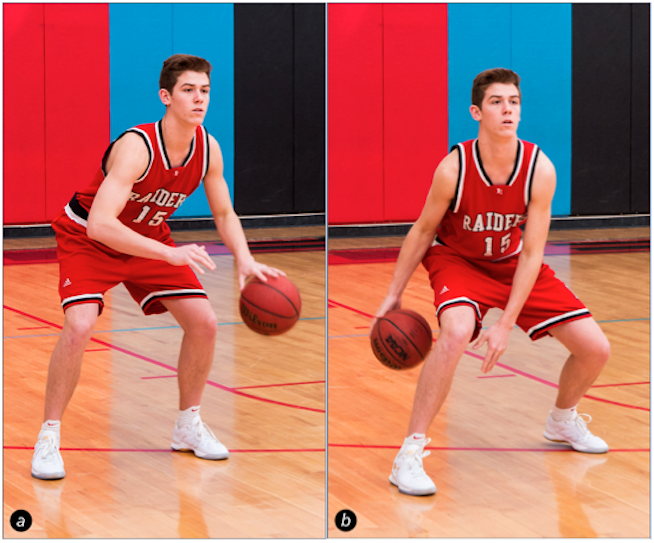 Another player also does not want to go to training, but, fulfilling his duties to the team, he goes to train [4].
Another player also does not want to go to training, but, fulfilling his duties to the team, he goes to train [4].
Strengthening your health with basketball
Proper organization of basketball lessons is necessary for physical development, gives positive emotions, allows you to develop good habits when playing sports: organize proper nutrition, observe hygiene requirements, take care of your health. But basketball training alone cannot provide a comprehensive development of physical qualities: it is necessary to include elements from other sports in the training process, such as athletics, acrobatics, swimming, etc. When classes are properly organized and they are led by a qualified specialist, this gives good result. If classes are conducted without taking into account the physical capabilities of a young athlete and the load turns out to be too great for him, it is possible that he will stop training. The constant control of the coach-teacher over the state of health of the young player will help to avoid negative consequences [2].
Responsibility to the team
It is very important to instill in children a sense of responsibility for the success of the team. For example, a defender must be able to keep one on one against an attacker. He is personally responsible for the result of his actions, which affects the result of the entire team. Friendly and official games are very useful. Therefore, it is very important that the coach emphasizes the importance of the interaction of players and builds training in such a way that each athlete is aware of his responsibility to his partners and team [7].
Example: In a competition, a team wins at first, but after the playing time has expired, they begin to lose. Children begin to blame not themselves, but others, it turns out that a player with a weak psychological state quits playing and goes to the locker room, letting the whole team down. And of course, the team lost the end of the game. The player let down not only the team, but also the coach with his behavior.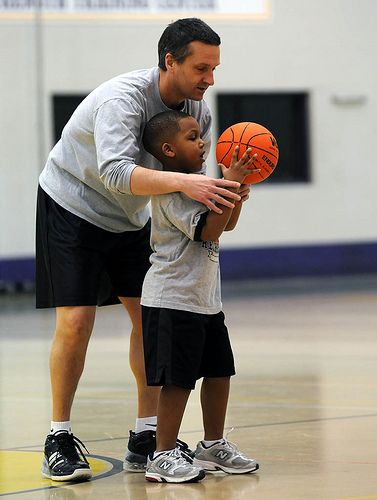 In such cases, the coach must be ready for various psychological situations and make a change in time, take a minute break, but in no case shout at the children, but calmly explain tactical actions in defense and attack.
In such cases, the coach must be ready for various psychological situations and make a change in time, take a minute break, but in no case shout at the children, but calmly explain tactical actions in defense and attack.
Compliance with rules
When playing basketball, they must adhere to the rules of training and the rules of the game, as well as fulfill their personal duties in the team. Students must learn to work in a team. And the basketball team is the best place to develop these qualities [6]. Example: it happens that children play aggressively in training, which leads to various injuries. The coach must explain to the children that this is not an option - to behave this way, you need to work harmoniously in a team, and it doesn’t matter what the relationship is between each other, who hit whom, etc.
Respect for others
The coach must pay special attention to the behavior of his players in relation to opponents: they must not insult them, but, on the contrary, they must be helped to rise when they fall, talk after the game, congratulate them on their victory, etc. The coach must teach his players to understand that the rivals are the same children as they are, and they also love to play basketball, they also try to achieve success, and that sports rivalry should be mutually friendly [3].
The coach must teach his players to understand that the rivals are the same children as they are, and they also love to play basketball, they also try to achieve success, and that sports rivalry should be mutually friendly [3].
The coach is always an example for children, and he should never forget about it. Therefore, in no case should he insult, ridicule or humiliate his students, the opposing team or the judges. He must set an example A coach working with young players has a huge responsibility for their education, and he must constantly remember this responsibility [2].
Competitiveness
Naturally, it is very important that a team of children gain competitive experience during the school year, which included victories and defeats, good and bad games, and that this experience helps to perceive victories with calmness, and defeats with hope. Understandably, players are happier when they win than when they lose. Winning should not be the main goal.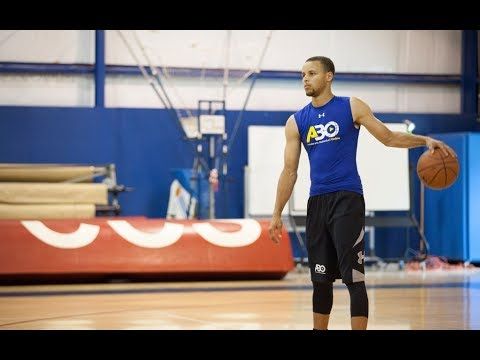 After the game, the coach must analyze game situations with the players, not paying attention to its result, set new tasks and improve them in the future.
After the game, the coach must analyze game situations with the players, not paying attention to its result, set new tasks and improve them in the future.
Self confidence self
Coach confidence is the belief that his players have the ability to achieve their goals. Self-confidence is an internal state of a person when overcoming difficulties in order to achieve a result. A player's confidence increases if he feels he can do whatever is required during a game or practice. For a basketball player, confidence is the key to progress, as it allows you to calmly respond to a stressful situation in the game and count on achieving the goal [4].
Example: there are coaches who do not care if the team wins or loses, who do not understand anything in basketball or, on the contrary, are not confident in themselves and in their decision. The mood of the team for the game and the conduct of the game also depend on this.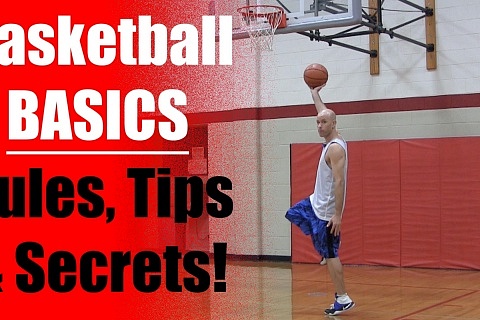 Therefore, it is better for such people to stay at home, and not work with children.
Therefore, it is better for such people to stay at home, and not work with children.
Self-awareness and self-respect
Self-consciousness determines a person's idea of himself, and self-esteem shows the degree of development of this idea. In children and adolescents, self-awareness and self-esteem are not constant and often change depending on success or failure in those activities that the child considers important for himself, such as basketball. The relationship between a coach and young athletes can have a decisive influence on nurturing their self-awareness and self-respect. Therefore, the coach can have a positive impact on the players by using the following strategy: precise and specific clarification of the goals; assistance in achieving them and encouraging the right actions; tactful attitude towards players when analyzing their mistakes and explaining ways to correct them [3].
Trainer's working style
The working style of a coach must be appropriate in any situation.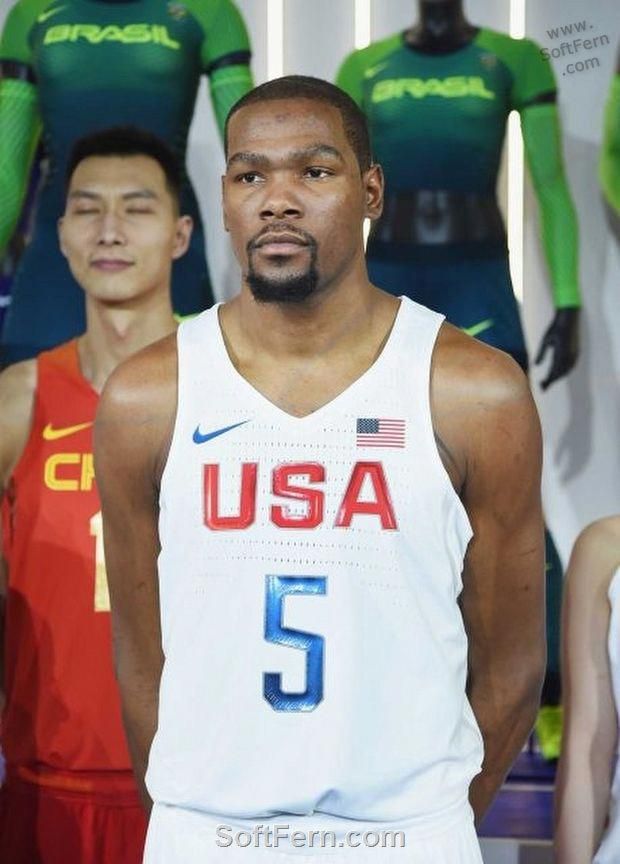 One of the most common and widespread problems is that coaches working with young players try to copy the work of coaches of adult professional teams. This style of work may not be productive. The best coach is not the one who blindly imitates eminent mentors, but the one who works, taking into account the characteristics of his team, such as the age of the players, their skills, common goals and attitudes towards the wards. Anyone who trains young players should not forget that the coaching profession is a huge responsibility to children, education and society as a whole [2].
One of the most common and widespread problems is that coaches working with young players try to copy the work of coaches of adult professional teams. This style of work may not be productive. The best coach is not the one who blindly imitates eminent mentors, but the one who works, taking into account the characteristics of his team, such as the age of the players, their skills, common goals and attitudes towards the wards. Anyone who trains young players should not forget that the coaching profession is a huge responsibility to children, education and society as a whole [2].
When working with young people, special attention should be paid to evaluating the decision that affects the players, requiring the players to try and make efforts, evaluating the actions of the players according to their age, skill and desires, regardless of the result of the game.
Basketball can be an excellent school in which young players learn to find a compromise solution, persevere in the most difficult situations, take personal responsibility for the success of the team, work smoothly, all together, respect other people, perceive victories and defeats as a path to self-improvement.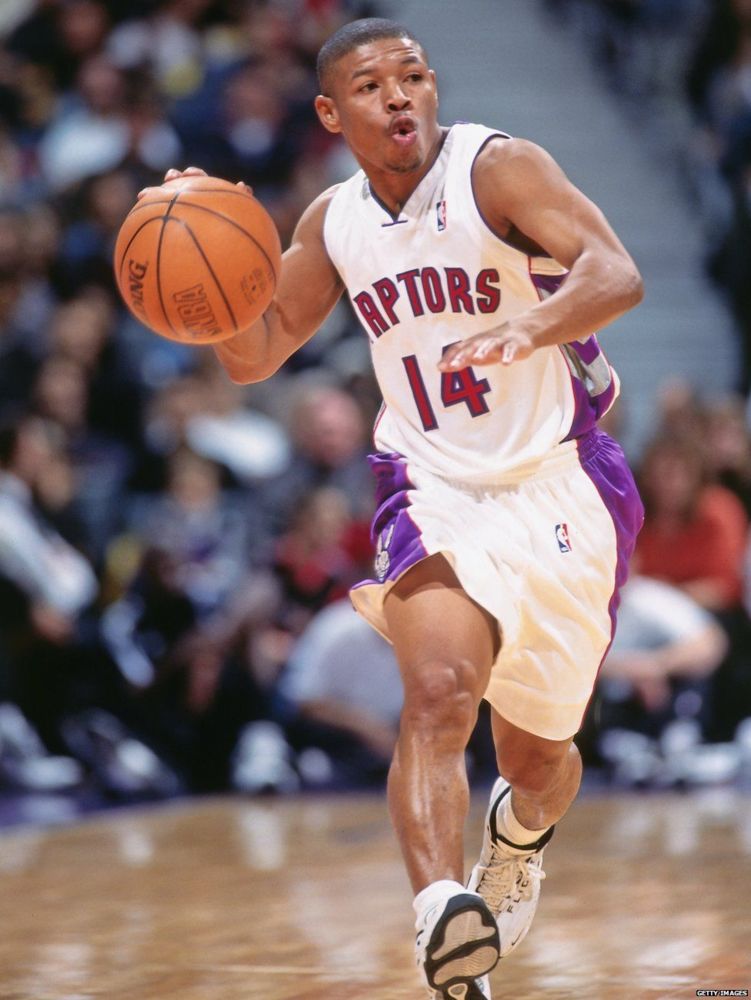
Basketball is an excellent educational tool that a coach must be able to use and develop for the benefit of his students [7].
Thus, the philosophical culture of a coach is a manifestation of spiritual culture, which consists in integrated personality traits that allow you to think highly, create creatively with aspirations, live with dignity for the benefit of the development of the young generation of basketball players. By virtue of their professional qualities, achieve success. Build your pedagogical work on the principles of humanization and socialization of the individual.
The more the teacher remembers that the students look at him as a higher being, the stronger his influence on the children will be, the more joyful each of his praises will be, the deeper each reproach will cut into the heart of the student, and therefore all the work of education will be incomparably more beneficial. (Dobrolyubov N.A.) [1].
Literature:
- Weindorf-Sysoeva M.
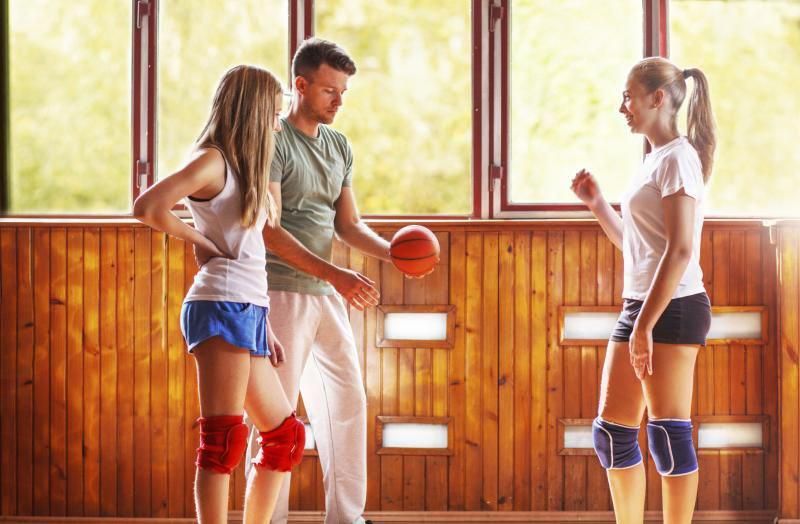 E., Krivshenko L.P. Pedagogy: Lecture notes. - 2nd ed., revised. and additional - M .: Yurayt Publishing House, 2010. -239With.
E., Krivshenko L.P. Pedagogy: Lecture notes. - 2nd ed., revised. and additional - M .: Yurayt Publishing House, 2010. -239With. - Gutman B., Finegan T. All about the training of a young basketball player. - M .: AST, Astrel, 2007. - (Series "Step by step").
- Gomelsky A. Ya. Encyclopedia of basketball from Gomelsky. — M.: FAIR-PRESS, 2003.
- Gomelsky E. Ya. The game of giants. — M.: Vagrius, 2004.
- Zheleznyak Yu.D., "Basketball". Lesson curriculum for children's and youth sports schools and specialized children's and youth schools of the Olympic reserve. Moscow — 1984, 239s.
- Nesterovsky D.I. Basketball. Theory and methods of teaching. Textbook for students of higher educational institutions. -: Publishing Center 1. "An exemplary program of sports training for children's and youth sports schools (CYSS), specialized children's and youth schools of the Olympic reserve (SDYUSHOR)" Yu. M. Portnov and others. Moscow - 2004 "Soviet Sport".
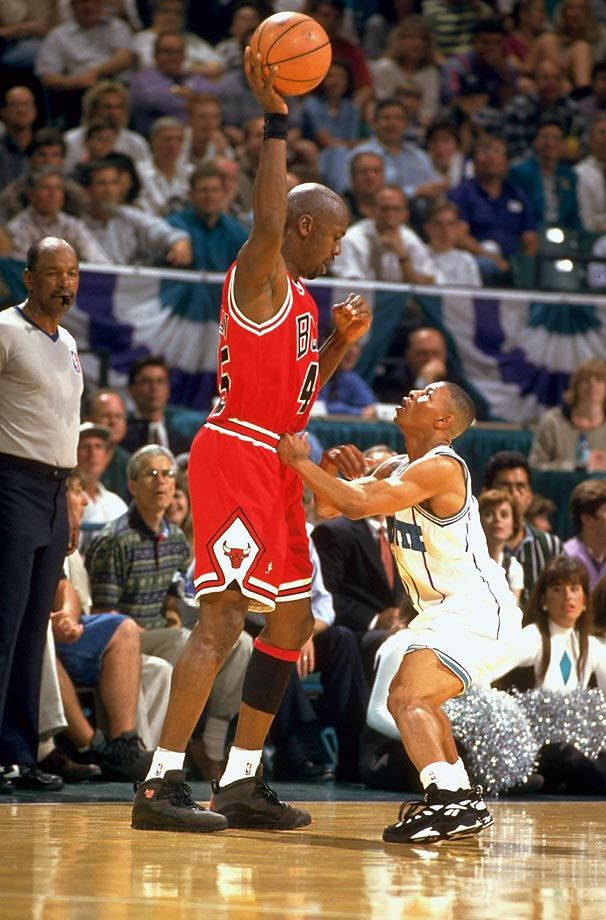 100 s.
100 s. - The program of the discipline "Theory and Methods of Basketball". For universities of physical culture. Edited by Yu. M. Portnov. Moscow — 2004
Basic terms (automatically generated) : player, team, coach, child, basketball, playing basketball, game, young player, great responsibility, special attention.
Common Mistakes in Kids Team Practice
By Coach MAC
Have you ever wondered what mistakes you make when you run basketball practice? In creating this blog, I have been blessed to interact with some of the smartest basketball minds in the US. What better way to help you and collect answers to our simple question from all these experts? I asked leading basketball experts to answer: "What are the most common mistakes coaches make when conducting training in children's basketball?" There are two ways you can digest their responses...
1. I created this list so you can skip some by going down to your favorite expert.
2. Grab a coffee, make sure you have 20-30 minutes to spare, and read the entire list (recommended).
Darrell Johnson – Cross Over Hoops
The most common mistake that coaches make when conducting youth basketball training is neglecting the basics of fundamental technique. Some children's coaches are too concerned with the results of their team's games, how many wins they can get. Don't get me wrong, winning is important, but developing fundamental individual technique skills is much more important at a child level. No one will remember your elementary school team record, but what they will remember is winning their state varsity tournaments or maybe the U.S. championships... Most kids' training should be spent on developing skills, not teaching offensive and defensive strategies. What good is a game worth when your players can't dribble, pass, or shoot the basket? The basics of individual fundamental offensive and defensive playing techniques must be taught correctly and then trained using repetition.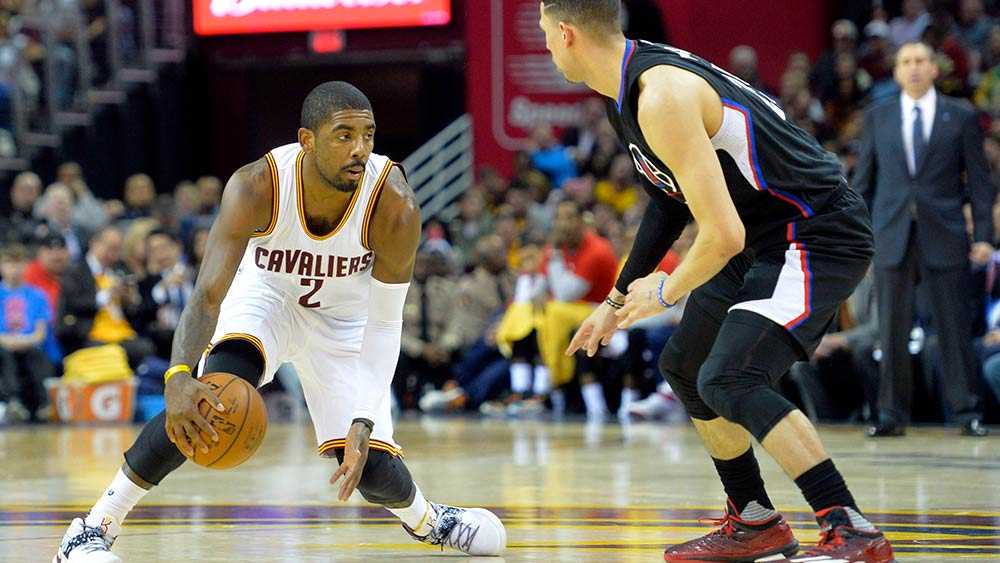 If a player does something wrong, then the mistake must be corrected before a bad habit is formed. Too many players enter middle and high school with terrible habits that are extremely hard to break because they weren't corrected in elementary school during the training period. Establishing a good foundation of fundamental playing technique is the primary responsibility of children's coaches for the future careers of their pupils.
If a player does something wrong, then the mistake must be corrected before a bad habit is formed. Too many players enter middle and high school with terrible habits that are extremely hard to break because they weren't corrected in elementary school during the training period. Establishing a good foundation of fundamental playing technique is the primary responsibility of children's coaches for the future careers of their pupils.
Alan Stein – Stronger Team
The most common mistakes youth coaches make are:
Training is not age appropriate (physically, mentally or emotionally). Training is not targeted. Workouts are boring.
Brian McCormick - 180 Shooter
Exercise must have a goal, and the coach must also know the goal for each part of the workout, even if the goal is to take a break to recover before intense exercise. However, the biggest mistake is talking too much and giving answers to all the players to their questions. There is a misconception that players learn a lot from the coach's conversations or briefings; but players learn more from doing. When the coach speaks, the players do nothing. Instructions should be short and concise. Players should be able to decide for themselves what to do or what they should have done. When coaches constantly give advice, players stop thinking and rely only on the coach.
There is a misconception that players learn a lot from the coach's conversations or briefings; but players learn more from doing. When the coach speaks, the players do nothing. Instructions should be short and concise. Players should be able to decide for themselves what to do or what they should have done. When coaches constantly give advice, players stop thinking and rely only on the coach.
Randy Brown – Coach RB
1. Conducting a workout without a well thought out plan prior to practice. Note: The plan must be developed jointly with the assistant trainer so that what is taught is the result of a collaborative effort. Every workout needs a goal.
2. Not making maximum use of time, court space and high involvement for all players. those. - Gathering in line for throws is one of the most mediocre wastes of time.
3. There is no method for evaluating every workout. Without a methodology to accurately assess the progress of players and teams, how to measure the improvement of this training session, the necessary adjustments for the next training session, and use the analysis of how time was used and whether your goal in training was achieved - there can be no good results.
4. #1 frustrating - Trying to do too many things and waste time attacking and defending instead of splitting them apart and teaching/coaching/making players responsible for each skill. What for? - If you do not make the players responsible for their actions in training, then this is the fault of the coach and not the players. How can a coach be frustrated, angry to make substitutions when he didn't teach / coach / and not every player / and the team as a whole listened to him, practiced skills in exercises, and then put them into practice. Until this is done, the game is a joke, and the coach is to blame for this.
Bryan Burrell - New Age Elit Sports
In my opinion, the most common mistake in training children's teams is the amount of time coaches spend on special game situations.
I believe that time in kids basketball practice today is only spent making their current team better, not working on things that will benefit the players throughout their future careers.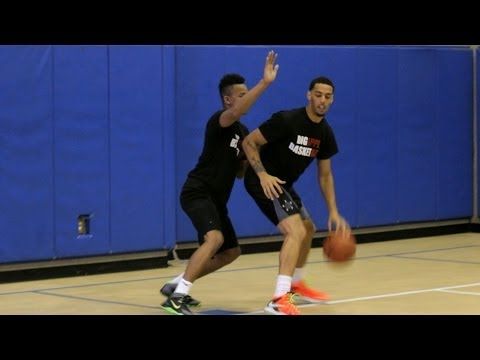
Chris Hyppa – Chris Hyppa BasketBall
Coaches are only focused on winning!
• Everyone wants to win, but the "development of individual fundamental skills" at the youth level takes a back seat to win. I believe development should be focus #1. Victories will follow. Developing through learning and improving skills, raises basketball IQ and strengthens relationships with players!
• Have a plan!
• I see a lot of kids training without a "goal". Kids coaches will have more productive workouts and see players progress if they document progress/failures and have a plan for every workout! "Confidence comes with preparation" - you have the power to inspire confidence, be prepared!
Courtney Campbell – Train to Ball
• I think it's a common mistake coaches make to spend 20% focused time instead of 80%. This comes from the Pareto principle (or the 80-20 rule) which states that 80% of the results come from 20% of your actions.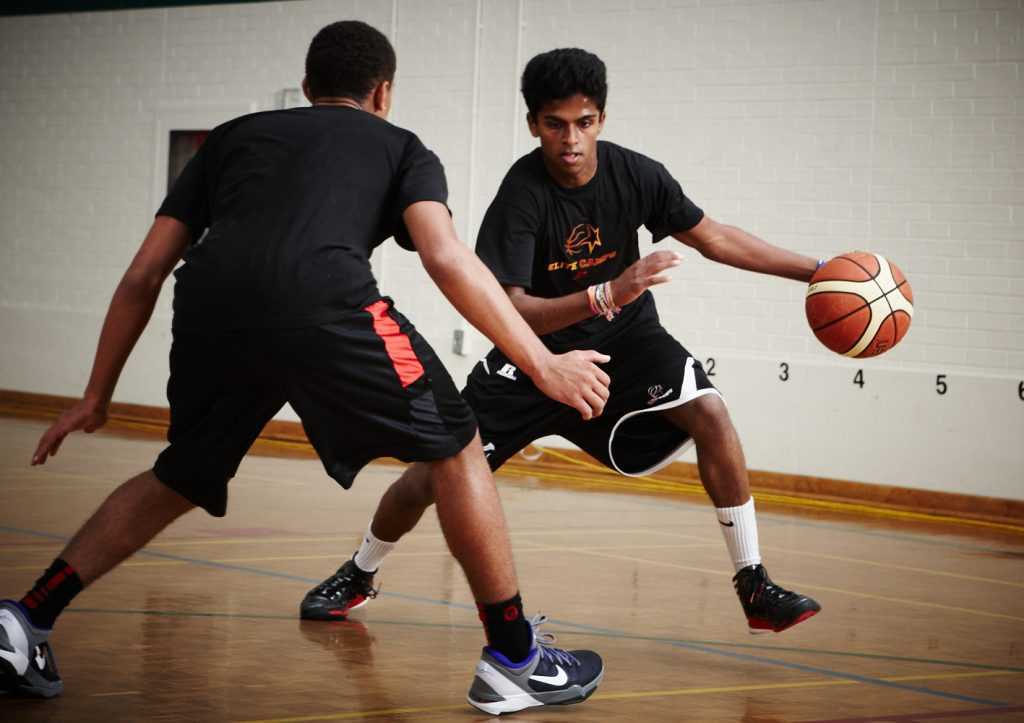 I think a lot of young coaches' drills are designed to teach certain skills that are rarely used in games. Drills can be chosen randomly without thinking about what are the dominant skills needed to create an effective and productive player. I try to tailor my agility drills, footwork, individual ball technique, etc. to learn and improve the basics of what will be 80% applied in the game.
I think a lot of young coaches' drills are designed to teach certain skills that are rarely used in games. Drills can be chosen randomly without thinking about what are the dominant skills needed to create an effective and productive player. I try to tailor my agility drills, footwork, individual ball technique, etc. to learn and improve the basics of what will be 80% applied in the game.
• In addition, there is an increase in the use of rubber bands and other training tools and equipment that will help increase the first stride, speed and agility of the players. However, most coaches are not aware of the mechanisms of injury in our game. If the trainer does not have knowledge of the general mechanism of injury, you are likely to increase the number of injuries with this equipment (knee, back and other injuries). Use this equipment with the limitation to your proper self-study.
Dave Hopla - DaveHopla.com
I find that most coaches are more interested in managing the game or letting them play rather than teaching them how to play. It never seems to be enough training to pass, catch, or throw. Too much dribbling.
It never seems to be enough training to pass, catch, or throw. Too much dribbling.
David Nurse –Perfect Shots Shooting
I strongly believe that one of the biggest mistakes children make is that they want to start learning offensive play formations by making players become "robots". The more coaches emphasize drills that put young players in situations where they have to make quick decisions and think for themselves, the more and sooner they will develop their IQ of their game. It's like when you want to learn a new language, it's easiest to do it while you're young, before your brain gets developed in that area. The same with IQ "feel basketball". It is very important to develop this feeling as early as possible and youth coaches should do their job much better. I have seen all this all over the world, and this same topic is driving me crazy! I compare these bad habits of being a "robot" to sleeping in comfortable beds - it's easy to get into bed, but very hard to get out. Players must learn to think for themselves at a young age and this habit will pay dividends in their development.
Players must learn to think for themselves at a young age and this habit will pay dividends in their development.
Drew Hanlen - Pure Sweat Basketball
• Too much flame and not enough fuel
• Too many old routines (eight 3s, throws with no resistance on passes) and not enough individual skill development
• Too much play and not enough development exercises
• Lack of correction (too many mistakes allowed).
• Winning at lower levels is celebrated instead of focusing on learning skills for long-term success
Duane Jourdeans - Rule of 5
1: No training plan
2: No focus on building relationships with players
3: No development and improvement in game management
not how to play
5: Shouting when learning
6: Lack of preparation of leader players
7: Tall children learn to play only in the center position
8: Lack of mental preparation.
9: Fitness exercises without a basketball goal
Galen Harkness - GalenHarkness.com
Major mistake: Too much emphasis on strategies to win the game, which often sacrifices a long-term program of fundamental player and team development.
Other thoughts.
1st: Too much emphasis on game control and game combinations. Coaches have a good set of playing combinations that are trained to complete the throw. But what can players do when schemes don't work? This strategy is designed in such a way that it does not allow or encourage players to make the right game decisions.
2nd: Lost time. A large amount of time is spent when moving from one exercise to another. Drills are rarely designed or implemented in such a way that all players are constantly involved in them. Too many stand still.
3rd: Lack of professional development. Some coaches teach and practice the way they learned to play. The basketball game is constantly evolving, but not all children's coaches evolve with the game.
Ganon Baker – Elev8Basketball
Problem - Coaches talk too much during practice where the kids lose their attention and sweat. They are too wordy in their instructions. Decision - do instruction/correction 20-50 seconds. Make your remarks, and then exit them without disrupting the flow of intense training.
Problem - trainers do not use humor or have no sense of humor. They seem to be tough and awkward in their communication. Decision - A coach with a child's heart but an adult mind. Enjoy the conversation, but don't overstep the bounds. Basketball game for kids, help them have fun!
Problem - they use useless exercises in their training. The drills are boring and not like a game, and do not belong to their offensive and defensive systems! Solution - examine your ship. Try to find ways to have a professional workout. Teach the skill, choose exercises similar to the game, such as 1 on 1, 2 on 2 or 3 on 3.
Teach the skill, choose exercises similar to the game, such as 1 on 1, 2 on 2 or 3 on 3.
Gary Maitland – Coach Maitland
1. Punishment. Children's basketball practice is an early experience of a long-term passion and commitment to the sport we love. The biggest mistake a coach can make is to create an environment where kids are afraid to "do it wrong". It is unfortunately all too common for children's basketball coaches to punish their players for mistakes. The player should not be afraid to make mistakes. Mistakes are an integral part of the learning process and hence it is important for children to know that they will not be constantly penalized. Basketball involves a number of complex ball handling and decision making skills. Skills must be taught, developed and mastered. When the coach punishes a player for a mistake, he/she prevents the player from taking risks; Risks help them learn the game and develop a sense of making quick decisions and actions.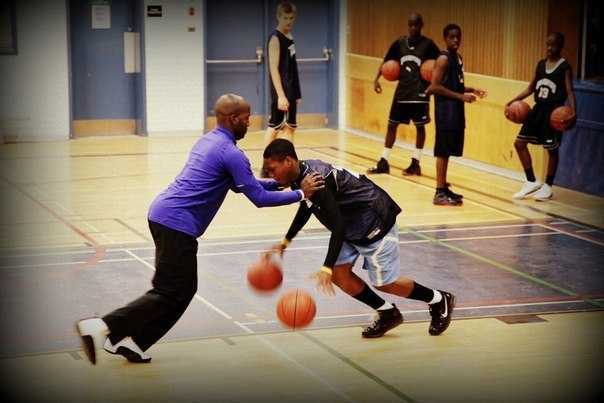 Those early training years should be interesting. Children should have fun when they learn new things. If a coach punishes kids with endless push-ups or sprints, it is unlikely that they will want to continue training with him and have fun. It will only be a matter of time before they stop attending these workouts. It is very important for young players to understand the consequences of their mistakes (i.e. that poor performance has a negative impact on the course of a drill or game). Punishments do not teach children how to do a technique or how to make a better decision next time. This type of coaching behavior is so common that young players judge the quality of coaching/training by how intense the punishments were. "What was the workout like?" "It was hard. We ran a lot and did a lot of push-ups." This answer shows that not much (or anything) was learned during this training session.
Those early training years should be interesting. Children should have fun when they learn new things. If a coach punishes kids with endless push-ups or sprints, it is unlikely that they will want to continue training with him and have fun. It will only be a matter of time before they stop attending these workouts. It is very important for young players to understand the consequences of their mistakes (i.e. that poor performance has a negative impact on the course of a drill or game). Punishments do not teach children how to do a technique or how to make a better decision next time. This type of coaching behavior is so common that young players judge the quality of coaching/training by how intense the punishments were. "What was the workout like?" "It was hard. We ran a lot and did a lot of push-ups." This answer shows that not much (or anything) was learned during this training session.
2. Long lines Children's practice should be structured so that each player has a lot of touches on the ball. Children's training is developmental training and therefore a sufficient number of repetitions of learning and improving elements of individual technique should be planned. When the coach puts the players in long lines, it reduces the number of times the player has the ball. Their chance to interact with the learning decreases, they become bored and distracted. It is very important for young coaches to organize their training so that all children are active, busy and practicing skills.
Children's training is developmental training and therefore a sufficient number of repetitions of learning and improving elements of individual technique should be planned. When the coach puts the players in long lines, it reduces the number of times the player has the ball. Their chance to interact with the learning decreases, they become bored and distracted. It is very important for young coaches to organize their training so that all children are active, busy and practicing skills.
Greg White - Twitter Profile
The epidemic of bad coaching in youth sports is high at all times. I applaud USA Basketball for creating a coach certification program, but there is a question we need to answer: "Who trains our coaches?" Here are a few things I see wrong with youth coaching. 1. Exercise is more important than Skill. Coaches use exercises for the sake of exercise in elementary school. Ever watched an 8 year old team run a 3 player eight? This has no meaning or purpose. Find a way to practice skills without overly difficult exercises. We learn the alphabet letter by letter. 2. Fundamentals. Young players should not associate practice with yelling. Children's basketball should be fun and upbeat while learning the basics of the game. 3. Play simply without complicated game patterns. Teach players how to play, not how to make combinations. What do you gain by using exercises at the 5th grade level that are not well suited to the 7th grade. 4. Competitions. Too many games. It doesn't take a genius to know that in a team game of 8 year olds, the 2-3 zone wins games. At this age, competition is more for the ego of the parent than for the benefit of the children. Let children be children. I think we shouldn't play 5v5 under 10.
Find a way to practice skills without overly difficult exercises. We learn the alphabet letter by letter. 2. Fundamentals. Young players should not associate practice with yelling. Children's basketball should be fun and upbeat while learning the basics of the game. 3. Play simply without complicated game patterns. Teach players how to play, not how to make combinations. What do you gain by using exercises at the 5th grade level that are not well suited to the 7th grade. 4. Competitions. Too many games. It doesn't take a genius to know that in a team game of 8 year olds, the 2-3 zone wins games. At this age, competition is more for the ego of the parent than for the benefit of the children. Let children be children. I think we shouldn't play 5v5 under 10.
Hal Wilson - Coaching Basketball Wisely
Maybe these exercises were used when you were playing because they suited your skill and development level, but they are not suitable for the level of the team you are coaching now.
2) The second big mistake is to just do something because it's done by the successful coach X on TV. Great coaches have great players with great needs, again, your players may have other needs. Trying to get your players to use and perform elements of high and complex skills and concepts before they have mastered the basics of fundamental individual technique, a recipe for disaster, for herbs or frustration. Coaches must look beyond their own experience and find cutting edge ideas, but must adapt them to their team's current situation. A drill should be designed with clear goals: a) How this drill can help your team in games, b) Gradual progression (break complex skills and concepts into more accessible levels for your players), c) Applying clear goals and objectives of the game (players need to understand why skills and concepts are important and how they will help them be more successful individually and how they will help their team in games).
3) The third big mistake is to train to make the coach look good and not to teach the team to play better. Yes, your difficult drill may look great in practice, but as mentioned in point two, if it doesn't have a clear application in games, then it (the drill) is really more for you than for your players.
Yes, your difficult drill may look great in practice, but as mentioned in point two, if it doesn't have a clear application in games, then it (the drill) is really more for you than for your players.
4) The fourth biggest mistake is taking away the enjoyment of training and sports, often in the name of winning. Some well-meaning youth coaches try to dampen or extinguish the competitive fire of their players by focusing too much on short-term outcomes. Enjoy the ride and let your players do the same! We want the long-term sporting development of our players, on and off the court!
Henry Barrera - Shoot360
1. There is no training planning, 2. They say much, 3. There is no sufficient development of the individual fundamental technique of the ball and the throwing technique
James Gels - Coaches Clipboard
Very very a common mistake is that children's trainers talk too much. Players get bored and don't learn anything. When I train in high school, I always say that a good practice is when the players are talking (communicating) and the coach is not heard.
When I train in high school, I always say that a good practice is when the players are talking (communicating) and the coach is not heard.
Jeremy Russotti – 1Percent Club
It seems like every practice I've watched involves mostly double stride shots after the dribble, free throws and double basket play. There is nothing wrong with these drills, but it is rare to see drills that include elements in which players will make decisions. Therefore, I think youth coaches should add more IQ exercises that involve using their brains to make decisions. Simple 3v2, 4v3 drills will really help players think about how to attack and defend. These drills force players to think about how to make an assist (and an accurate pass), but also force players to learn how to defend properly. Another area that coaches should focus on is what to do when a player touches the ball. Young players must catch, pass, or throw the ball into the basket as many times as possible in practice. The more reps they get in these areas, the more they will improve. Taking team shots (free or spotted), or just playing 5-on-5, doesn't give players enough ball possession to develop.
The more reps they get in these areas, the more they will improve. Taking team shots (free or spotted), or just playing 5-on-5, doesn't give players enough ball possession to develop.
Jim Burson - JimBurson.com
There are some really obvious mistakes that are not limited to coaching kids, such as being unorganized and not focused. Assuming that many of the youth coaches are not professionally trained, there are many dangers in their ignorance. Some of my immediate thoughts are:
• Not organized,
• Coach and players as a group and not as individuals,
• Preparation for practice and play is not focused;
• Knows the difference between too much practice and not enough practice; need to know the emotional, physiological, conditioning and maturity levels of players in order to assess this on an ongoing basis,
• Worry too much about winning rather than trying to make players better,
• Doesn't care about anything but X (defense) and O (attack),
• Does not teach children how to win and lose with character, class and perspective,
• Not only develop leaders; instead of having the best player do everything, have different kids stepping up and taking turns leading drills, eg
• Not teaching players how to communicate on and off the court; in the gym and away from the training room,
• Do not work on the development of the internal motivation of the players, which is best done by supporting, encouraging, listening to them; it can't be that the players just do what they say,
• Not stressing the importance of studying alongside playing basketball and how studies and sports interact,
• Forgetting what makes kids better at basketball helps them be better at life; although this can happen naturally or as a by-product of training, learning when it is planned and built into the program,
• Playing with the elite, even unintentionally, often with their own child,
• Thinking that their coaching is the only what makes children better; they forget that you cannot force someone to become better - you can only influence them so that they themselves want to become better,
• Doesn't know the real reasons why he coaches - are they right?
Joe Haefner – BreakThrough BasketBall
1.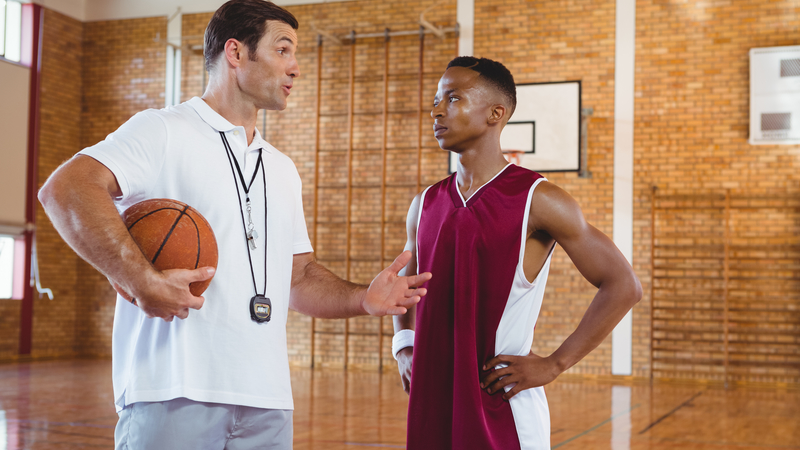 Focus on offensive combinations rather than teaching them how to play.
Focus on offensive combinations rather than teaching them how to play.
2. Players standing in long lines.
3. Have a plan for what to do in training with a short and long term.
4. Run without a ball to improve their physical condition when they could do the same with balls while developing basketball skills.
5. Do not separate training in team offense and drills for developing individual technique skills. You can do it at the same time.
6. The monkey sees. The monkey does. Just doing an exercise that they saw on YouTube or on the Internet, without really focusing on the purpose of the exercise. It's not what you do... it's how you do it. a. What are you trying to improve? What is your goal? b. Why are you trying to improve this? Is it suitable for this age? Are there more important things to train? Will it benefit them in the future? in. How do you develop certain skills? Will this exercise fulfill your purpose? 7. Creating a high stress environment with yelling and constant criticism, not realizing that the highest level of learning occurs when stress levels are lower.
Jordan Delp – Pure Sweet Basketball
When I watched youth basketball practices, the biggest problem I saw was that coaches spend so much time worrying about what to play instead of teaching children how to play. Instead of focusing on winning a 5th grade basketball tournament, we should focus on teaching these kids to be successful later in their career by focusing on ten areas of development.
1 - Throw technique. 2 - Dribbling with both hands / against pressure. 3 - Passing the ball with both hands / against pressure. 4 - Throws with both hands when passing / against pressing. 5 - Basic footwork, triple threat reading. 6 - Creation of SB. 7 - Moving without the ball. 8 - Protective stand. 9 - Defensive positions, reading screens, helping the helper. 10 - Be a real teammate. If our young basketball players have spent their time working in these ten areas from their earliest ages, I believe your game will be at the highest level. This means that training time must be purposeful, it must be planned, and it must be effective. Young gamers spend too much time playing games and not working on their skills enough. Children naturally love to compete and we can use practice time to encourage their competitiveness - you won't need to play 5 games a weekend (where losing or winning doesn't really matter), you will need to spend more time in practice room by developing your game and your players.
Young gamers spend too much time playing games and not working on their skills enough. Children naturally love to compete and we can use practice time to encourage their competitiveness - you won't need to play 5 games a weekend (where losing or winning doesn't really matter), you will need to spend more time in practice room by developing your game and your players.
Lamar Hull – Inspiration Basketball
Some of the common mistakes I see are: a team with the ability to fight,
• Do not focus on the basics of individual technique,
• Performing an exercise without explanation and demonstration,
• Do not pay any attention to defense,
• Make no effort to live like a team
Lemar Griffin – Grind Time Hoops
What I mean is, if you don't train the things you want your players to be able to do at game speed in game situations, how can you expect them to pass, shoot, dribble in games? The answer to this question is simple, I believe that the lack of training exercises at game speed and imitation of game situations is a common mistake of youth basketball coaches.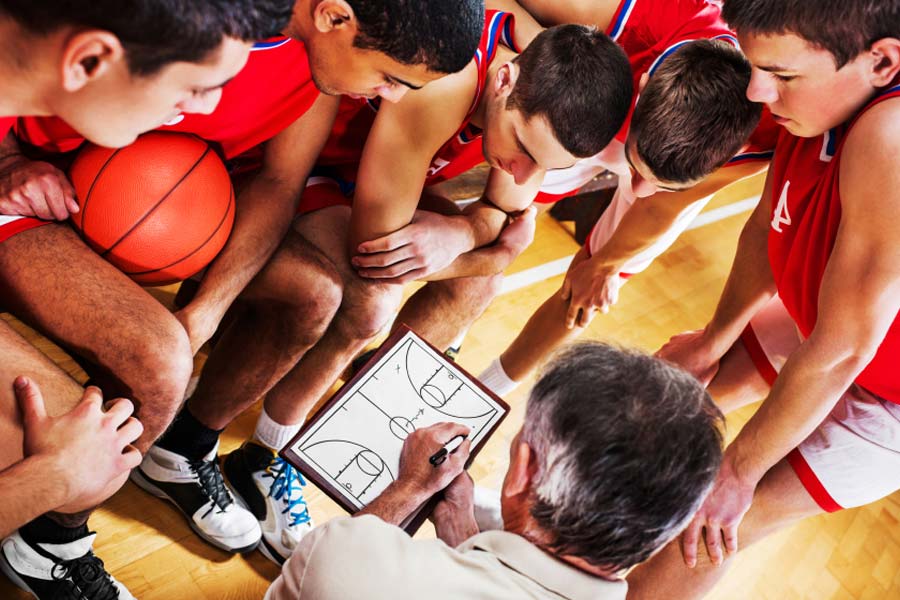
Mark Adams – Mark Adams BasketBall
1. Not spending enough time teaching/explaining the basic principles of fundamental technique. 2. Spend too much time learning offensive play patterns instead of teaching kids "how to play." 3. Too much time is spent learning zone defense when kids should be learning the basics of personal defense. 4. In general, there are too many games played in children's basketball and there is too much emphasis on winning. Children should learn how to play this game and have fun.
Matt Kramer – Beyond the Hardwood
1. Teach the kids to play the personal defense first, before learning the zone. For me, this is the biggest one. I watched a bunch of kids basketball games last winter because my son plays in the 9 and 10 year old league. In almost every game I've watched, teams have played zones. This inhibits the growth of players on both sides of the ball. Defenders don't learn how to defend against anyone, and attackers don't know how to play zone defense.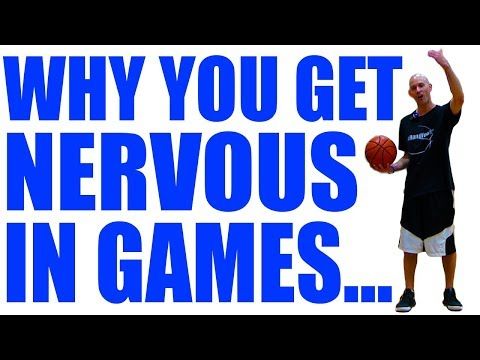 This is bad for everyone. Teach player player defense.
This is bad for everyone. Teach player player defense.
2. Teach kids how to attack without the ball. The world has gone crazy with screens and rolls. It's great at a professional and high youth level, but when the whole game is screens and rolls at a children's level, then two play and the remaining 3 children on the site as in a parking lot, as spectators. Dribbling kills experience for 90% of players on the court and pick and roll requires a lot of dribbling. Teach your kids how to rush to the basket and even screen the ball if they already have an idea how to do it.
3. Don't waste your time on tricky offensive throw-ins that are inaccessible to children. Every time you waste time teaching kids throw-in patterns, you are wasting time that could be spent teaching kids to play man-man defense and teaching them to play offense without the ball. If you really want to help your players improve, teach them individual technique skills.
Mihai Raducanu - No Limit Performance
Coaches should focus 100% on skill development. Ages 6-9 - Children need to learn motor skills. Ages 9-12 - Children must learn to train/play the right way. Learn the basic skills of the game. Ages 12-16 - Children should continue to learn how to exercise. More strategic specific model here. Implementation of technical and tactical concepts. Ages 16-18 - Train to win. Emphasis on winning. Other game concepts. Expanded skill development. Age 18+ - Train to win. Everything you need to play the game must be fully installed. Players will receive a higher level of education in everything. Lots of mental preparation.
Ages 6-9 - Children need to learn motor skills. Ages 9-12 - Children must learn to train/play the right way. Learn the basic skills of the game. Ages 12-16 - Children should continue to learn how to exercise. More strategic specific model here. Implementation of technical and tactical concepts. Ages 16-18 - Train to win. Emphasis on winning. Other game concepts. Expanded skill development. Age 18+ - Train to win. Everything you need to play the game must be fully installed. Players will receive a higher level of education in everything. Lots of mental preparation.
Mike Costello - Pure Sweat Basketball
I think one of the common mistakes in kids training is having a lot of 5-on-5 games. Many children in training do not touch the ball much for their development. I prefer 3-on-3 games in which each child touches the ball.
Wow. Thank you! Many thanks to every specialist who took time out from their busy day to answer this question for all of us.